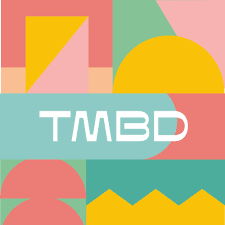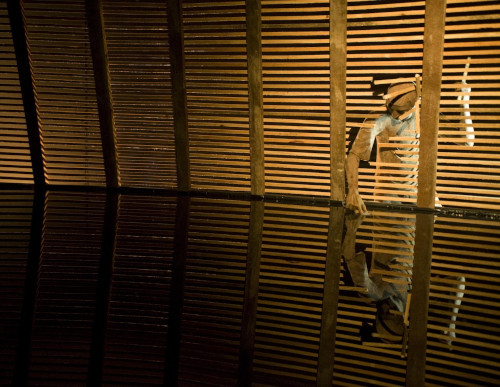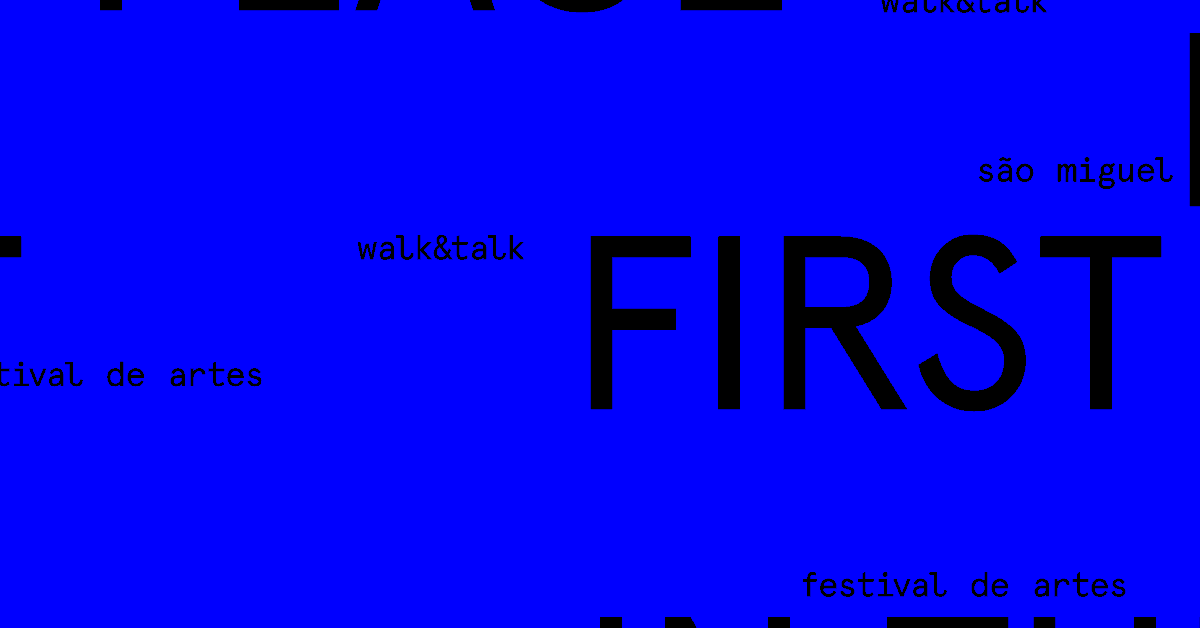Sara Anjo, a native of Madeira, is a performative artist in constant evolution. Her relentless pursuit of an artistic object does not imply a beginning, middle and end, quite the opposite is the journey that governs her strange way of life and that helps to create new realities.
You started as a classical dancer and then decided it was not in this context of dance that you felt it was your path, why?
Sara Anjo: A new route was necessary, because it has to do with my way of being and thinking dance. After all was the way I chose to see the world, it is my area of learning and knowledge. The classical dance has a more rigorous technique, more pulled over a certain vocabulary, would eventually not be enough, although I still like a lot of this type of dance and even the contemporary that has a whole language behind.
So you were looking for new languages?
SA: Yes, and it lasted a long time, because I started to dance professionally in the national ballet company and then went to yoga. This phase was very important for me because I distanced myself from dancing and started doing another body of work, a lot of awareness, had much thought behind it, was more connected to breathing and that distance my work. In parallel with the body, I began to open other horizons, other doors and I was realizing what would be my way.
That search for new languages were done out of Portugal. Have studied dance in various countries in Europe, why? This answer was not in your country?
SA: Yes, it is here too, now, to me training is a constant. In terms of my career it has been important to continue to study, to learn other things and deepen my knowledge. I am currently doing a master's degree in choreography in Amsterdam. Being outside is good, opens us immense horizons, contacted with other realities, with different people, we found our peers and this enriches us a lot. My base is Lisbon, but the fact that I traveled, look thru those other eyes, made me more open, more willing to do my work, because if I had only just been living in Portugal, I would not know.
And on this trip by the knowledge you find some reference?
SA: There are many. For example, Berlin was a very important city for me, were there many friends, gave me training, work and have many inspiring artists, more than a reference what I felt was that there was a great desire to try any idea that strange as it was, or difficult to face, or understand it gained its strength and was explored. Then there are spaces for artistic residencies where we make contact with many other people, very different looks on dance. More than references were spaces that were important, one of this is "Ponderosa, movement and discovery", has workshops, I spent there a long time and was key. Also, there was the "Smash" which made me find many artists and now, in Amsterdam the master of all the training I've ever done is the best, I feel privileged and is a very good program, with high-level directors and colleagues .
Tell me about your project "no one knew how to tell that story."
SA: It's a project that's been awhile I started to develop it, it was very important to me in terms of the production, we were a very great team, six artists from various fields, was a female imagery and it was a difficult project because many of the women became pregnant. Was extended in time and because of that feminine nature has been very difficult to achieve in terms of timing, as I was driving I had to make this gymnastics, but after all is the same as we women do on a day-to-day basis.
So it was a project with women of various areas ending with a show?
SA: We did a show at the Centro Cultural de Belém, in the context of "Vox Nova" which is a program for emerging artists, but made several residences, workshops with communities in various places where we were going. It was a project extended in time for this very reason, we passed thru several places in Portugal and in each of these areas we promote training or a presentations that culminated in a show, then edited a small book. When I look back it gave me a big production learning, how to assemble a team, bring it on, be flexible to the needs of each and this nature is to bring children into the world (laughs).
Next is the artistic project "liquid landscapes" in what distanced itself from your previous work? And what added in terms of your career profissonal?
SA: The "Liquid Landscapes" was a host in a space that really I like that is the public washhouse in Carnide, where people will still do washing, it is a community area that was ceded to the "theater of silence," a company run by Maria Gil and we collaborated closely together. She welcomed this concept and I did not have a heavy burden in terms of production, could do it in a freer way, because it had no burden of administration and organization, there was plenty of "dive" in my search terms movement, to look at that space. However, there is a common thread in the two projects, my work has a very strong connection with the landscape, coming from where I was born in Madeira, the forest, the mountain, the relationship with the sea and the wide horizon. In "no one knew how to tell that story" did a lot of residences outside urban centers, most in rural areas, sparsely populated and in the natural environment. My work always has this constant line of work always outside the studio, inside doors, more in nature. The washhouse is within a city, is not exactly a natural space, but it included elements such as water tanks and the outdoor space that where they dry, because it is quite large with trees, had all this respect, hence the name.
And what did you withhold from this work?
SA: "Liquid Landscapes" was very good in terms of time for my research and since then the project is what has led me forward, is not very clear what I am saying, but what I want is to create projects not shut on certain topics upon themselves to come up with a product, I try to avoid that today. For me it is very important that each open a space of research see where it goes naturally and only then realize what may result from it. That's what this artistic project left me, was a starting point, but that space things have been developing naturally to flow to an object to be displayed, that's what I try to do now always.
So you do not like to work solo? Prefer projects involving more artists?
SA: I like to work alone, my next work is a solo. The truth is that cooperation at times are difficult, but they are very enriching, bring us always challenges that is not our own world, are other viewpoints and this is important. I'd say like both sides, I learn to work alone and in partnership, both within as with others, there is a moment of recollection, reflection, when we realize what is important and what interests to explore, it's good to do it alone, but it is also essential to build bridges with others. That's happened in the space 116 was a residence with my colleague Tia, in our masters have to present our own research and on departure she had the soil, but we have similar things, common thoughts and then she came here to explore a little bit like this ideas crossed or not, as a dialogued.
Regarding the performing arts how do you think the public sees it? There is a suspicion, because it is not just dance goes beyond that, do you think there is an audience in Portugal for this type of project?
SA: It has grown a lot. In Portugal, especially in major cities and not only, there is fortunately very good cultural programs. Often performing arts crossing the dance and theater are in a kind of a border that we do not very well know to name, this strangeness means that the public does not feel comfortable, or not notice and mayber that's what makes them more " lost". I think the difficulty is that, because from the moment that the public has the key to that behind, to open this world, they "dive" and can "travel". When not achieve it, as if they could not go inside, there is no access, so this strangeness and this distance. This has to do with the issues that cross contemporary art, with the abstract, sometimes we looked, we soon understand and that feeling comes immediately, while contemporary art asks us a process of unraveling, of breaking wthat is behind that world, the questions they raise, the idea and then we can enjoy. On the other hand, the relationship with art also restricted to what I like or do not like. The field must be opened, the esprecto have to expand because there is always something you do not enjoy, but challenged us to have other ideas, made us know something we did not know and that's also important. Talves what the public needs is not to create so much expectation of always like everything, or have a pleasant aesthetic experience, because art can also be something else besides...
After this master, what is your next step?
SA: The one thing I say about the master, that maybe this in the history of the Portuguese people, is that I like to surf in one direction, but then it is much more important what happens along the way, possibly drifting, because there are things that happen and you need to be aware of this. Often I cannot say what I will do next, when I came here these 15 days just thought I'd address the audio choreography, but then Tia came and was much more important to be working. The part that I want to explore is the "walk" which is a practice I have ever in my work, liked to do artistic residences and travels related to this issue. In this concept there is a lot of "guide" of drifting and continue to be free in my research.
There is still much of the island in you?
SA: Yes immensly, as much as I want to you cannot erase it. The be out there helped me realize how important was my childhood, where I built a foundation for what I'm doing. The landscape itself , the experience is something that is permanent, my next research has to do with the "body tree," it has to do with the roots of the plant and mine.










